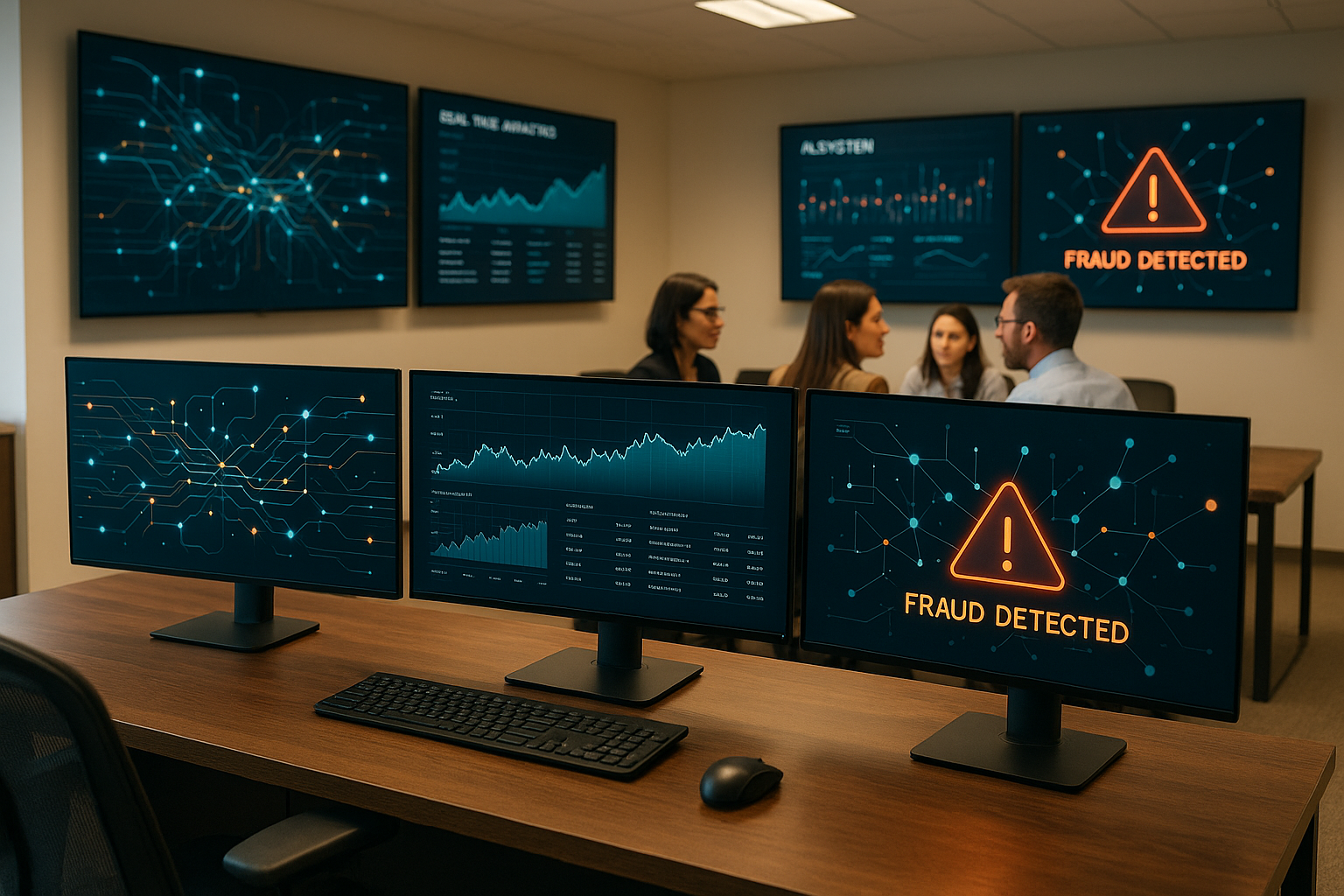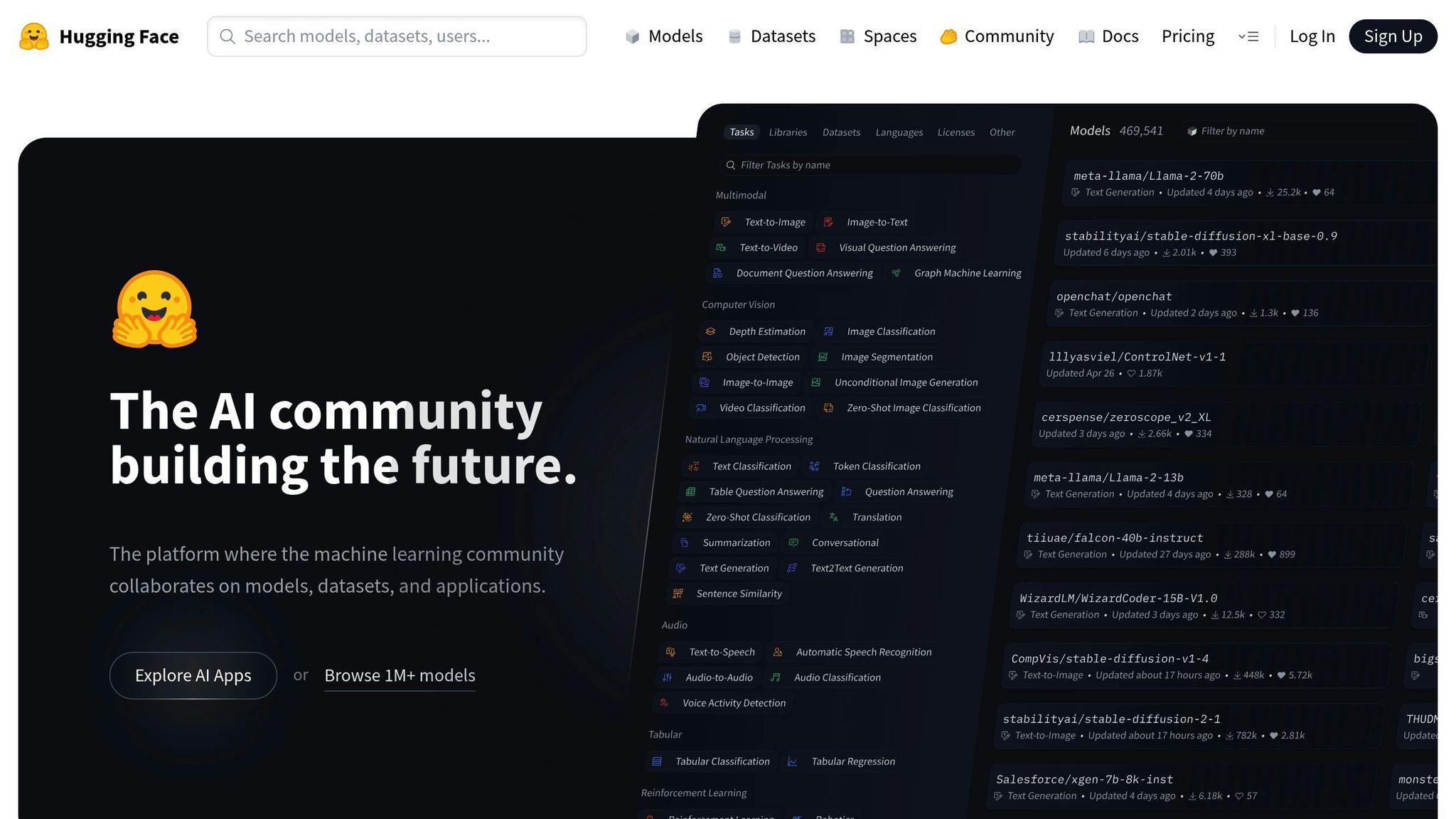
Financial fraud costs U.S. institutions over $40 billion annually, with criminals deploying increasingly complex tactics. Traditional systems often fail to keep up, leaving gaps in fraud prevention. Retrieval-Augmented Generation (RAG) systems offer a modern solution by combining AI-driven data retrieval with real-time decision-making. Here's why RAG systems are gaining traction in fraud detection:
While RAG systems require robust IT infrastructure and data governance, their ability to process vast, complex data sets makes them an effective tool for combating evolving fraud tactics in the financial sector.
RAG systems bring together two powerful AI components: a retrieval component that sifts through vast amounts of data and a generative AI component (often a large language model) that interprets and synthesizes the retrieved information. This combination enables the system to make fraud detection decisions based on current, context-specific evidence instead of relying solely on pre-trained patterns.
These systems analyze both structured data, like transaction records, and unstructured data, such as policy documents, to deliver timely and relevant insights. When a suspicious transaction occurs, the system evaluates it against recent fraud trends, current compliance standards, and internal policies, creating a well-rounded risk assessment. This dual-layered approach allows for dynamic and real-time fraud detection.
RAG systems excel at processing large transaction volumes in real time while continuously updating their knowledge base without requiring a complete retraining. They adapt by incorporating feedback from recent cases and integrating new information as it becomes available. For instance, fraud investigators' input is immediately reflected in updated scam typologies and compliance changes.
A notable example of this capability came in 2024 when Mastercard rolled out a RAG-enabled voice scam detection system. This system combined real-time transcription, identity validation, and dynamic policy retrieval, leading to a 300% improvement in fraud detection rates.
By leveraging semantic search, contextual reasoning, and generative synthesis, these systems can identify and explain suspicious patterns. They also use graph-based relational modeling to map connections between entities like accounts, devices, and transactions, enabling the detection of complex, multi-step fraud schemes. Importantly, as these systems learn, they maintain clear and traceable explanations for every decision they make.
Explainability is essential for U.S. financial institutions to meet regulatory standards, as it ensures every fraud detection decision is backed by traceable justifications. When a transaction is flagged, the system provides specific evidence - such as excerpts from policies - to create a clear audit trail.
A study by the University of Waterloo highlighted this feature in a RAG-based phone scam detection system. The system achieved an impressive 98% accuracy while offering detailed explanations for each flagged call. By linking the generative model's outputs to the original source documents, decision-makers can review the exact reasoning behind every flagged transaction.
This transparency not only enhances detection but also supports more informed decision-making. For example, Ramp, a U.S. fintech company, replaced its fragmented classification approach with a RAG-based assistant. This shift reduced manual reviews and improved compliance efficiency.
For financial institutions looking to adopt these capabilities, specialized AI integration services can design custom RAG systems tailored to their compliance and security needs. Artech Digital offers solutions like custom AI agents and fine-tuned machine learning models, addressing the unique challenges of U.S. financial fraud detection and regulatory requirements.

Mastercard introduced a cutting-edge RAG system to monitor customer calls in real-time. The system transcribes conversations, pulls relevant fraud patterns and policy information, and employs large language models to flag suspicious behaviors during live interactions. In controlled tests, this approach achieved an accuracy rate of over 95%. By drawing insights from a range of data sources, the system uncovered voice scam tactics that traditional rule-based systems failed to anticipate. This success has opened doors for broader applications across Mastercard's global operations.
A leading global e-commerce platform adopted a RAG system to combat fraud by analyzing transaction histories, user behaviors, and cross-account relationships. The system retrieved and connected data from various sources, revealing hidden links between accounts that appeared unrelated at first glance. During pilot testing, this approach boosted fraud detection rates by more than 30% and significantly reduced financial losses by identifying coordinated attacks in real time. These advancements demonstrate how such systems can serve as a foundation for continuous fraud monitoring in major financial institutions.

JPMorgan Chase implemented a robust RAG-based monitoring system designed to process internal transaction data alongside external fraud intelligence feeds. This system updates threat indicators and regulatory guidelines in real time, flags suspicious activities with detailed context, and simplifies fraud review workflows. The results? Improved detection accuracy, fewer false positives, and increased operational efficiency - all of which contributed to enhanced customer trust. Its ability to adapt quickly to new fraud schemes ensures that emerging threats are addressed without delay, eliminating the lag often seen in updating traditional fraud detection protocols.
For financial institutions exploring similar solutions, these examples highlight the importance of integrating diverse data sources and leveraging real-time processing. Companies like Artech Digital specialize in crafting tailored RAG systems for financial institutions, ensuring compliance with U.S. regulations while fine-tuning AI models to address specific fraud detection challenges.
This section takes a closer look at the strengths and challenges of Retrieval-Augmented Generation (RAG) systems in the context of fraud detection, building on earlier discussions about real-time analysis and explainability.
RAG systems excel at delivering real-time fraud detection, providing clear explanations, and reducing false positives. Unlike traditional rule-based systems that need frequent manual updates, RAG models can adapt to new fraud patterns and regulatory changes almost instantly. For example, a study from the University of Waterloo found that these systems achieved 98% accuracy without the need for full retraining. This ability to quickly adjust is crucial in a fraud landscape that evolves rapidly.
Another standout feature of RAG systems is their explainability. They can retrieve specific documents or data points that support each fraud alert, making it easier for analysts to justify decisions to regulators and auditors. Additionally, the improved accuracy - measured through metrics like F1-scores and precision - leads to fewer false positives. This reduces unnecessary customer friction and allows fraud analysts to focus on real threats.
However, RAG systems are not without their challenges. Their reliance on real-time data retrieval and generation requires significant computational resources, which can strain IT infrastructure if not properly scaled. The handling of sensitive customer data also necessitates robust encryption, strict access controls, and comprehensive data governance to meet privacy regulations. Another concern is the potential for model bias, as these systems can inherit biases from their training data, making regular monitoring and auditing essential.
| Key Benefits | Primary Constraints | Operational Impact |
|---|---|---|
| Instant updates to fraud patterns | High computational demands | 98% accuracy without retraining (University of Waterloo) |
| Transparent decision-making | Stringent data privacy requirements | Enhanced compliance and audit readiness |
| Reduced false positives | Infrastructure scaling needs | Improved F1-scores and analyst efficiency |
| Adaptive learning capabilities | Risk of algorithmic bias | Continuous response to evolving threats |
These advantages and limitations highlight the importance of preparation when implementing RAG systems. Financial institutions should carefully evaluate their existing infrastructure and allocate budgets to handle the computational demands. For organizations with limited technical resources, partnering with specialized providers like Artech Digital can be a practical solution. Such partnerships can help design tailored RAG systems that balance performance with operational constraints while adhering to U.S. financial regulations.
The decision to adopt RAG systems ultimately depends on an institution's risk tolerance, budget, and fraud detection goals. Despite the challenges around computational costs and privacy, the improvements in detection accuracy and adaptability make RAG systems a compelling choice for forward-thinking financial organizations aiming to strengthen their fraud prevention strategies.

As real-time detection and explainability in RAG systems continue to improve, new trends are shaping the future of fraud detection. These advancements are not just refining existing systems but are also opening doors to more precise and sophisticated fraud prevention methods. Below, we explore some of the key innovations driving this evolution.
The next wave of RAG systems is expanding beyond text-based analysis to include data like voice and biometrics - such as fingerprints and facial recognition - within a single fraud detection framework. Research highlights that combining multiple data types enhances detection accuracy.
Financial institutions are already seeing the benefits of these multi-modal approaches. Modern RAG systems can process diverse inputs, including transaction records, text communications, and biometric data, by converting them into structured embeddings stored in vector databases. This integration allows for more comprehensive fraud detection across different channels, offering a more robust defense against fraudulent activity.
Blockchain technology is emerging as a powerful tool to enhance the security and transparency of RAG systems. By integrating blockchain, every decision made by the system is securely logged, creating an unalterable audit trail. This ensures that all data used for fraud detection - including retrieved documents and policy references - is permanently recorded and easily verifiable.
The combination of blockchain's distributed ledger with RAG's contextual analysis capabilities strengthens both security and adaptability. For instance, when new fraud tactics are identified, blockchain can quickly distribute updated information across the network. A real-world example of this is BBVA's use of RAG technology, which enables their AI agents to analyze phishing messages in seconds, significantly reducing the workload for cybersecurity teams. Once a new phishing pattern is verified, blockchain ensures it is immediately accessible to all connected systems, streamlining the response to emerging threats.
One of the most critical advancements in RAG systems is their ability to keep learning and adapting without constant human intervention. Traditional systems often require manual updates to address new threats, leaving gaps that fraudsters can exploit. RAG systems, however, use real-time adaptive learning to stay ahead.
A major strength of these systems is their ability to handle concept drift - the gradual change in fraud patterns over time. By tapping into external knowledge bases and enabling policy updates without the need for full retraining, RAG systems can quickly adapt to new tactics. Machine learning algorithms within these systems refine their performance based on real-time data and feedback, allowing them to distinguish between legitimate and suspicious behavior with increasing accuracy. This adaptability ensures that RAG systems remain effective even as fraud tactics evolve.
Experts predict that RAG systems will soon automate initial fraud reviews in low-risk, data-rich scenarios, where they consistently outperform human analysts in speed and accuracy. This automation won't replace human oversight but will allow analysts to focus on complex, high-risk cases while RAG systems handle routine tasks. By continuously learning from each interaction, these systems ensure they remain reliable and effective over time.
For financial institutions aiming to implement these advanced technologies, working with specialized providers like Artech Digital can streamline the process. Their expertise in building custom RAG solutions, integrating multi-modal data, and fine-tuning large language models ensures effective deployment while meeting U.S. financial regulations.
The integration of multi-modal data, blockchain security, and continuous learning is setting the stage for the next generation of fraud detection. As these technologies mature, they will create an increasingly challenging environment for fraudsters while making financial services safer and more secure for legitimate users.
RAG systems are reshaping how financial fraud is detected in the U.S. By combining real-time data retrieval with clear regulatory traceability, these systems bring a new level of precision and adaptability to combating fraud. They’re designed to respond to emerging threats while maintaining transparency and auditability in decision-making.
Recent applications of RAG technology have delivered impressive results. Detection rates have significantly improved, with research showing near-perfect accuracy on test data. These advancements represent a major step forward in the fight against financial fraud.
What sets RAG systems apart is their ability to quickly adapt to evolving criminal tactics. They can incorporate updated policies and threat intelligence without requiring a complete overhaul, making them a flexible and forward-thinking solution.
RAG systems offer clear, practical benefits for financial institutions. Here are some critical points to consider:
Looking ahead, combining blockchain technology with RAG systems could further enhance security and auditability. Blockchain’s immutable record-keeping and ability to rapidly share threat intelligence will be vital in countering increasingly sophisticated fraud tactics.
For financial institutions ready to embrace this cutting-edge technology, experts like Artech Digital can simplify implementation. With expertise in custom RAG solutions and multi-modal data integration, they can help institutions unlock the full potential of these systems while ensuring compliance with U.S. regulations.
RAG (Retrieval-Augmented Generation) systems bring a new level of precision to fraud detection by blending advanced AI technologies with real-time data retrieval. These systems excel at sifting through massive volumes of financial data, spotting irregularities, and identifying potential fraud patterns with greater efficiency than older, more traditional approaches.
With AI-driven tools like those provided by Artech Digital, financial institutions can harness the power of RAG systems to outpace increasingly complex fraud schemes. This ensures quicker, more dependable detection processes, helping organizations safeguard their operations and customers.
Implementing Retrieval-Augmented Generation (RAG) systems for fraud detection in financial services comes with its fair share of challenges. One major obstacle is data integration. Financial institutions often deal with massive amounts of data scattered across various sources. Bringing this data together in a way that's accurate, clean, and compatible with a RAG system demands careful planning and effort.
Another sticking point is model explainability. RAG systems rely on a mix of machine learning and natural language processing, which can make their decision-making process hard to decode. In the world of finance, though, understanding how decisions are made is non-negotiable. It's essential for regulatory compliance and maintaining trust with stakeholders.
There's also the issue of system scalability. Fraud detection needs to happen in real-time, meaning RAG systems must process large volumes of transactions without compromising speed or accuracy. To tackle these challenges, financial institutions often turn to expert AI integration services to develop solutions tailored to their unique requirements.
Blockchain technology plays a key role in boosting the performance of Retrieval-Augmented Generation (RAG) systems in fraud detection by offering a secure and tamper-resistant data framework. Its decentralized ledger ensures transaction records remain unchanged and protected from manipulation, helping to minimize the risk of fraudulent data alterations.
When paired with RAG systems, blockchain strengthens data reliability and accuracy - two essential elements for generating precise insights during fraud investigations. Moreover, blockchain's ability to process data in real time allows for quicker identification of suspicious activities, enabling financial institutions to act promptly against potential threats. Together, this integration forms a robust defense mechanism to protect financial systems from fraud.

.png)
